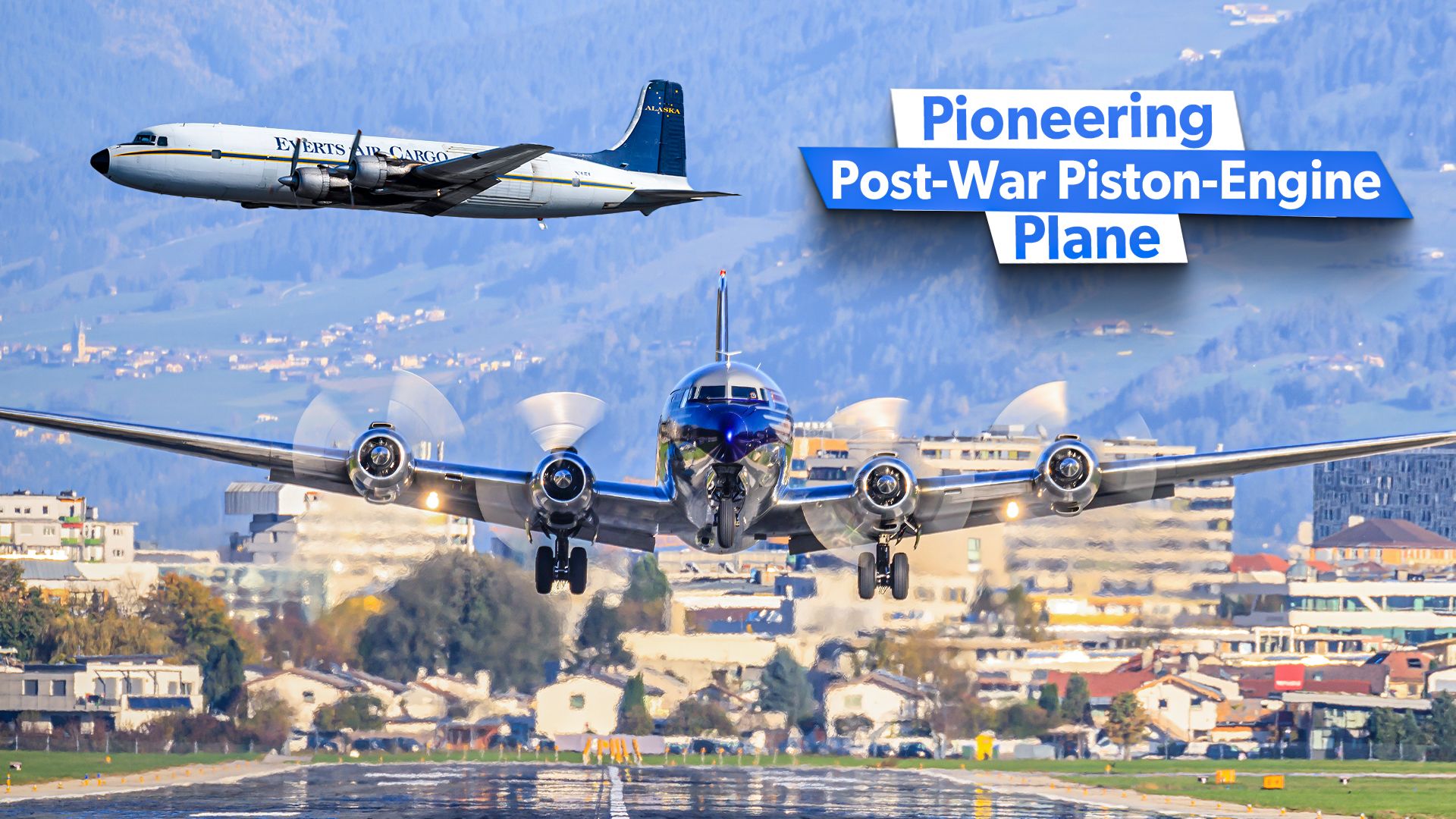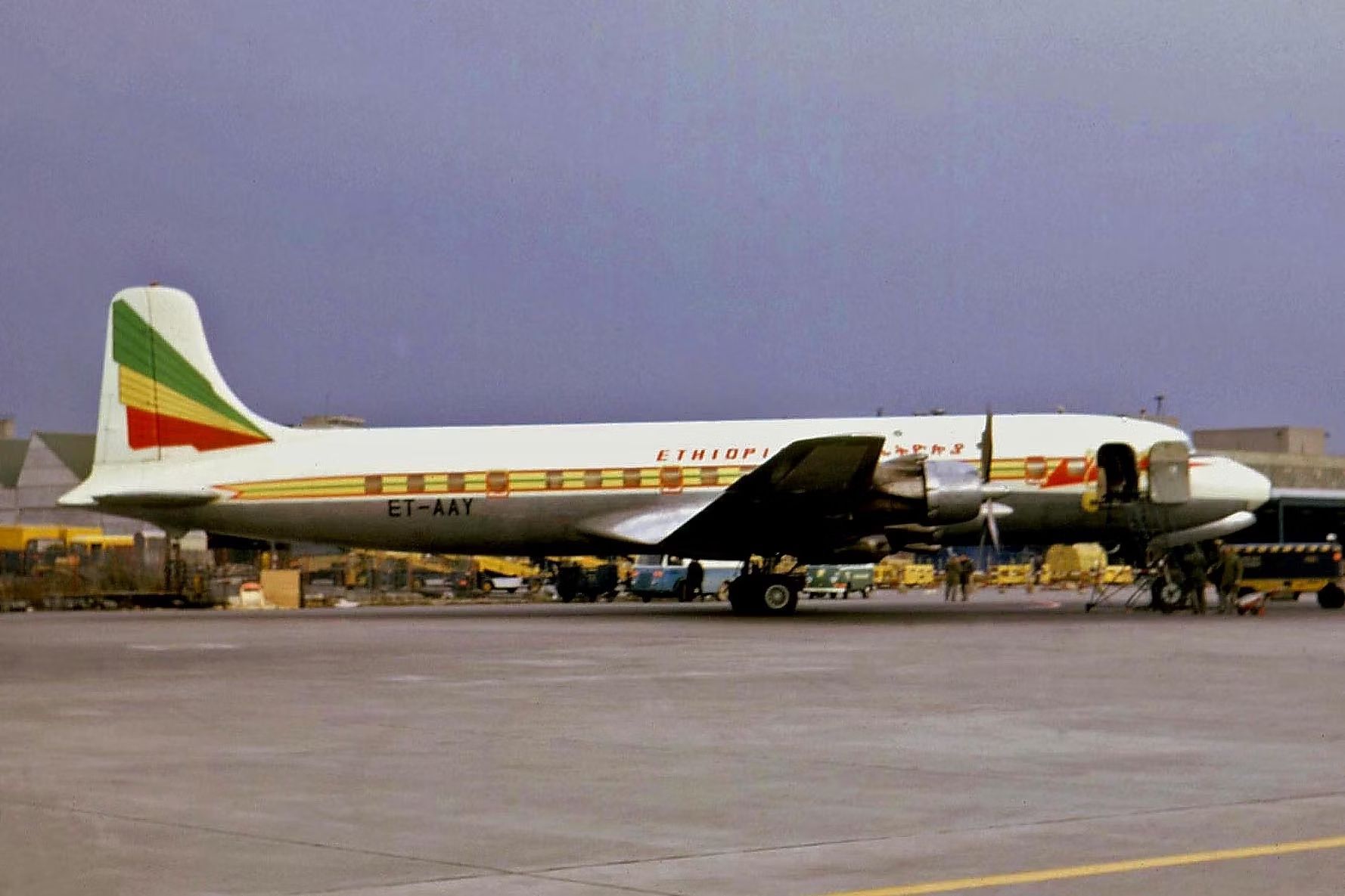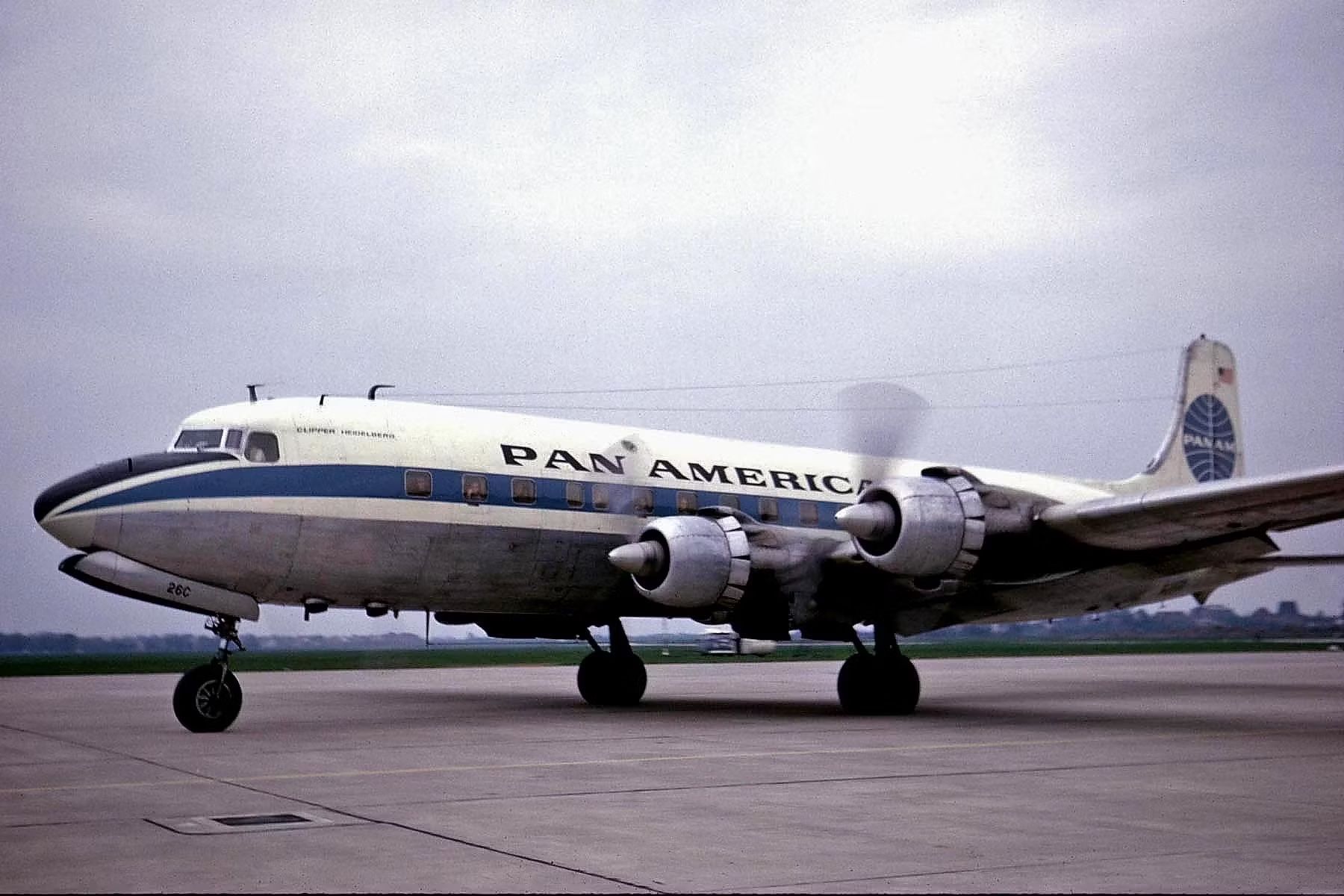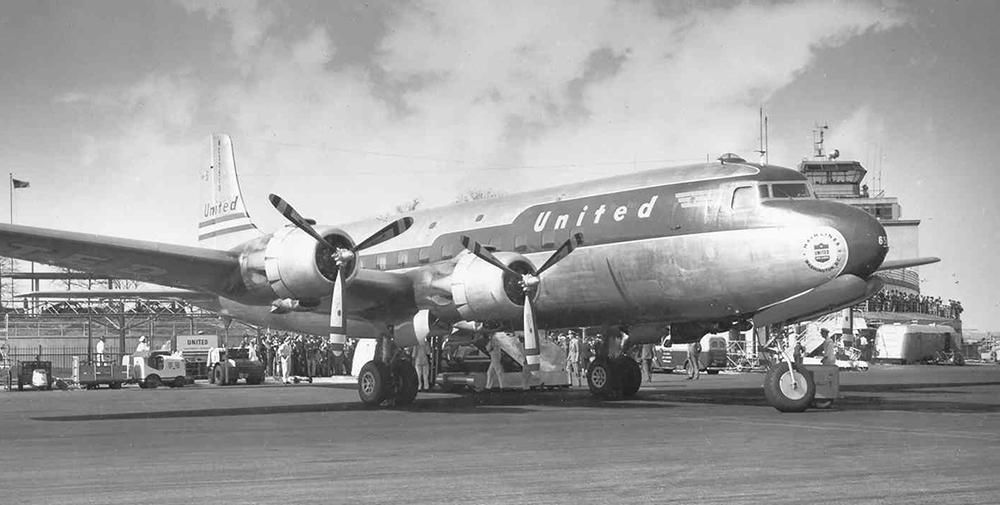Summary
- The Douglas DC-6 was a successful piston-powered airliner produced from 1946 to 1958.
- The DC-6 was favored by US airlines, reaching a flight speed of over 300 mph.
- The aircraft had a lasting legacy, remaining in service for decades and continuing to operate in various roles.
Among the most iconic piston-powered airliners of the 1950s was the Douglas
DC-6, a four-engine propellor-driven aircraft designed by the Douglas Aircraft Company for the United States military towards the end of the Second World War. Once the Axis powers had been defeated, it had become clear to Douglas that a golden era for commercial air transport was set to follow, and the manufacturer quickly shifted its once military-oriented design into what would become one of the most popular passenger and cargo aircraft of its era.
Amid competitive threats from rivals like Lockheed, which had produced the capable and long-range Constellation, Douglas had to focus on producing a plan that could deliver on all the metrics customers were looking for. When the first DC-6s rolled off assembly lines in the mid-1940s, the aircraft would soon become a favorite of many US-based commercial airlines, including its launch customers ![]() American Airlines
American Airlines
and ![]() United Airlines
United Airlines
.
During a 12-year production run from 1946 to 1958, more than 700 DC-6 aircraft were produced, almost all of which would remain in service for over a decade. With the jet age following soon after its production, the DC-6 was one of the last successful piston-powered airliners. Let’s take a deeper look at the story of the Douglas DC-6, and examine what made the post-war propliner so popular.
Origins and developmental process
According to R.G. Grant’s 2002 Complete History of Aviation, the Douglas DC-6 had its origins in the earlier DC-4. The United States Army Air Forces commissioned what would eventually become the DC-6 project in 1944, as it sought a larger and pressurized version of the C-54 Skymaster, a troop transport based on the earlier-generation DC-4.
The military also wanted a more powerful aircraft and encouraged the manufacturer to develop a four-engine aircraft with stronger powerplants. The military variant would become designated as the C-118 Liftmaster and would go on to serve with both the Air Force and the Navy for years to come.
Douglas would later go on to modify the original military designs to create a civilian airliner only a few feet longer than the DC-4, and the newly designated DC-6 would take to the skies for the first time in June 1946. After less than a year of flight testing, the aircraft was delivered to American Airlines and United (surprisingly at the same time), both of which would quickly put the plane into commercial service in March 1947. Here are some specifications for the DC-6 from Airliners:
|
Category: |
Douglas DC-6 Specification: |
|---|---|
|
Passenger capacity |
48-69 passengers |
|
Maximum takeoff weight (MTOW) |
97,200 lbs |
|
Range |
3,983 nautical miles |
Early operational history
Immediately upon entering service, the Douglas DC-6 would begin to distinguish itself with its impressive speed. American Airlines claimed that the plane could fly more than 300 miles per hour, which would make crossing the country in under eight hours a potential reality.
During one of the plane’s final test flights, Larry Peyton, Douglas’ chief test pilot for the program, managed to fly the plane between Dallas and Los Angeles in just over three hours. A New York Times article from November 24th, 1946 noted the significance of this event, stating as follows:
“At the cruising speed attained today, the time would be under eight hours [from New York to Los Angeles], putting American in a position to compete on speed with Pan American’s proposed flights by the Boeing stratocruiser.”
However, the aircraft’s early years of operations were marred by operational challenges and tragedy. Multiple inflight fires, notably including one that led to the crash of United Airlines Flight 608, caused the aircraft to be grounded in 1947, according to Time Magazine. A faulty fuel vent adjacent to the cabin’s cooing turbine was determined to be the cause of the incident, and all aircraft were grounded as a result of the incident.
Photo: Bureau of Aircraft Accidents Archives
The national grounding resulted in widespread modifications to all Douglas DC-6s, to prevent such a fire from breaking out again. Within just five months, the DC-6 was flying again, with United Airlines being among the first to bring the speedy propliner back to its cross-country fleet. The New York Times again reported in March 1948 that the DC-6 had managed to cut travel times, this time flying between Chicago and New York in just about three hours.
Later operations and legacy
Despite early accidents, the Douglas DC-6 would go on to become a truly iconic airliner of the era. Even Pan American, which had initially favored other piston-powered airliners, eventually came to rely on the DC-6 for freight operations, completing its first transatlantic cargo services with the plane.
Douglas’ backlog was once so large for the DC-6 that it was valued at $100 million by the time 1950 came around. The aircraft would eventually enter service with all the following US and international carriers, among many others:
- Aerolíneas Argentinas
- Air France
- Ethiopian Airlines
- Cathay Pacific
- Icelandair
- Japan Airlines
- Aeromexico
- KLM
- American Airlines
- Continental Airlines
- Delta Air Lines
- Eastern Air Lines
- Hawaiian Airlines
- Pan American World Airways
Furthermore, the Douglas DC-6 also managed to remain in service for decades, serving in several different roles such as transmitter platforms for educational television in the American Midwest and as water bombers in France. A few DC-6s were able to continue flying even in the 21st century as freighters, for operators like Everts Air Cargo.



